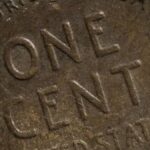In the world of rare and valuable coins, the Lincoln Wheat Penny has captured the fascination of collectors and history enthusiasts alike. Despite being a common coin in its time, certain versions of this iconic penny are now worth staggering amounts, with one particular coin rumored to be valued at an astounding $300 million. This article explores the history, features, and reasons behind the extraordinary value of the Lincoln Wheat Penny.
A Brief History of the Lincoln Wheat Penny
The Lincoln Wheat Penny, also known as the Wheat Cent, was first minted in 1909 to commemorate the 100th anniversary of President Abraham Lincoln’s birth. Designed by Victor David Brenner, the coin featured Lincoln’s profile on the obverse side and two wheat stalks on the reverse. This design was groundbreaking, as it was the first U.S. coin to depict a historical figure.
The coin was minted until 1958, after which it was replaced by the Lincoln Memorial design. Over its nearly 50-year production span, the Wheat Penny became a staple of American currency, with billions of coins produced.
What Makes the Lincoln Wheat Penny Valuable?
While most Lincoln Wheat Pennies are worth only a few cents to a few dollars, certain versions are highly sought after by collectors. The value of these coins depends on several factors, including rarity, mint errors, and historical significance.
- Mint Errors
Some of the most valuable Wheat Pennies feature minting errors, such as double-die obverses, off-center strikes, or incorrect dates. These errors make the coins unique, driving up their desirability and value. - Rare Mint Marks
Coins minted at specific locations, such as the San Francisco Mint (marked with an “S”) or Denver Mint (marked with a “D”), are often more valuable, especially if produced in limited quantities. - Condition and Grading
Coins in pristine condition, graded as “Mint State” or “Uncirculated,” fetch significantly higher prices than those that show signs of wear. The better the coin’s condition, the higher its value. - Historical Significance
Certain coins, such as the 1909-S VDB Wheat Penny or the 1943 Bronze Wheat Penny, are tied to unique historical circumstances. These coins are especially prized by collectors.
The $300 Million Lincoln Wheat Penny
The Lincoln Wheat Penny rumored to be worth $300 million is an exceptional case. While the details of this specific coin remain speculative, it is believed to combine several rare features, including a mint error, unique composition, and historical significance.
One possibility is that this coin is a rare prototype or test coin that never went into full production, making it a one-of-a-kind piece. Alternatively, it could be an extraordinary example of a well-known rarity, such as the 1943 Bronze Wheat Penny, in flawless condition.
Regardless of the specifics, this coin represents the pinnacle of coin collecting, where rarity, demand, and historical intrigue converge to create an astronomical valuation.
How to Identify Valuable Lincoln Wheat Pennies
If you have a collection of old pennies or come across a Lincoln Wheat Penny in your pocket change, here are some tips to determine if it might be valuable:
- Check the Date and Mint Mark
Look for key dates like 1909-S, 1914-D, or 1943, and note the mint mark. Rare combinations of dates and mint marks are often worth more. - Examine the Condition
Coins with minimal wear, sharp details, and original luster are more valuable. Consider having your coin professionally graded to determine its condition. - Look for Errors
Inspect the coin for unusual features, such as double-die obverses, missing mint marks, or incorrect compositions. - Research and Compare
Use online resources, coin catalogs, or consult with a professional coin dealer to compare your coin with known rarities.
Why Are Rare Coins Still in Circulation?
Despite their value, rare coins like the Lincoln Wheat Penny can occasionally be found in circulation. This happens for several reasons:
- Unawareness: Many people are unaware of the value of old coins and may unknowingly spend them.
- Inherited Collections: Coins from old collections may be spent by individuals who do not recognize their significance.
- Accidental Release: Rare coins can sometimes re-enter circulation through errors or mishandling.
Collecting Lincoln Wheat Pennies: A Hobby with Potential
For coin enthusiasts, collecting Lincoln Wheat Pennies is a rewarding hobby. It offers the chance to own a piece of history while potentially discovering valuable treasures. With a little knowledge and persistence, anyone can start building a collection.
Conclusion: A National Treasure
The Lincoln Wheat Penny is more than just a coin; it is a symbol of American history and ingenuity. While most Wheat Pennies are of modest value, rare examples like the rumored $300 million coin highlight the fascinating world of numismatics.
Whether you’re a seasoned collector or simply curious about your pocket change, the Lincoln Wheat Penny serves as a reminder that treasures can sometimes be found in the most unexpected places. So, keep an eye out – you never know what might turn up!
Disclaimer: The information provided in this article is for general informational purposes only. The value of rare coins, including the Lincoln Wheat Penny, may vary and should be verified through professional coin appraisers or dealers.




